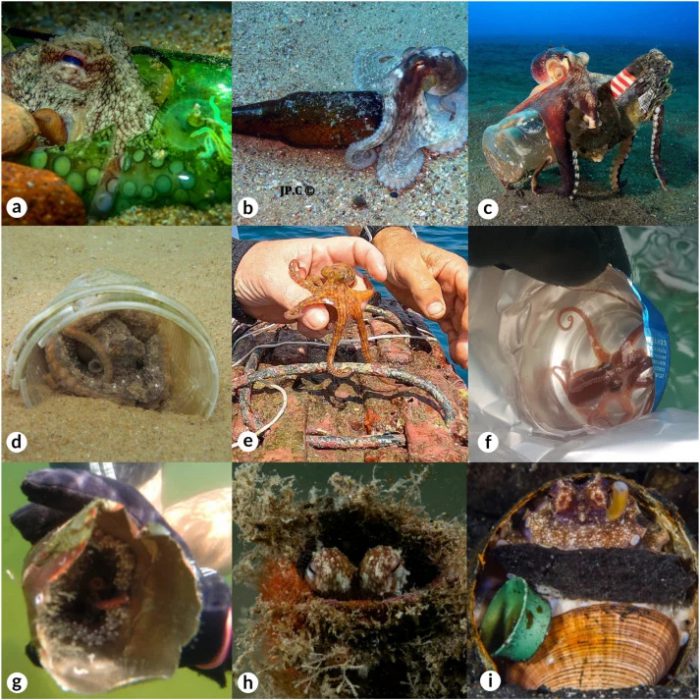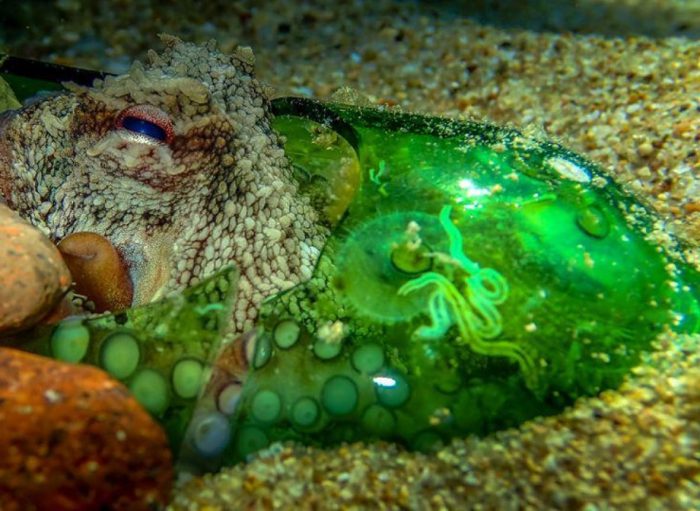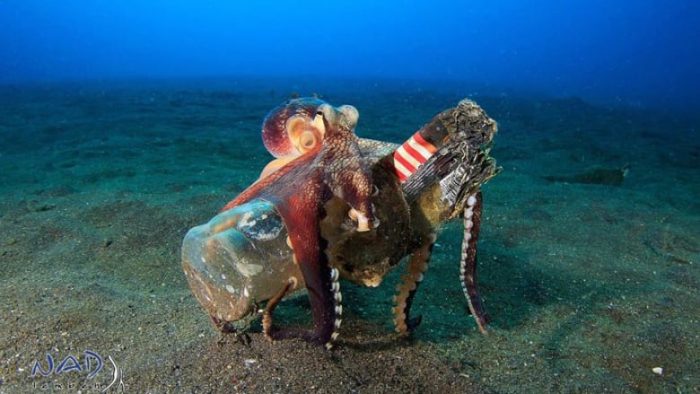A new study has collected over 260 images of octopuses using litter as shelter, camouflage, and even as a place to lay their eggs.
Marine biologists have known about this behaviour for a long time. But this is the largest collection of images ever put together to show how often the behaviour occurs. Which is a lot.
The study was put together by experts from four universities—the Federal Universities of Rio Grande, Santa Catarina, and Pernambuco in Brazil and the University of Napoli in Italy. It crowdsourced—or reached out to the public—to get as many photos as possible on the topic.
In an interview with CBC, senior author Maira Proietti from the University of Rio Grande said that, "through these images, we observed that it's very common for these benthic [deep-sea] octopuses to use artificial shelters instead of natural ones."
What kinds of objects?

A group of some of the images collected in this study. (a-b: John Paul Meillon; c: Serge Abourjeily; d: Claudio Sampaio; e: Caio Salles; f-g: Edmar Bastos; h: Marco Panico; i: Federico Betti)
The study noted that the most common litter items used by the octopuses in the photos were made of glass (41.6 per cent). Next up (24.7 per cent) was stuff made of plastic. Other items included things like metal cans, bottle caps, or discarded concrete. According to Proietti, there was even a case of an old car battery being used as shelter.
Obviously, these items are not natural. Normally, octopus would use things like sea shells for this purpose. But shells are becoming more scarce (difficult to find), while the amount of trash is increasing. So the octopuses are turning to using garbage.
What is the worry?

An object like this broken glass bottle can hurt an octopus. (John Paul Meillon)
You might ask, If an octopus wants to use a glass bottle as shelter, what is the problem?
It is a fair question. After all, the unique intelligence—and slippery nature!—of octopuses is well known. There is no arguing that these animals are capable of turning what has been thrown away into something of use to them. It's amazing that they can recognize these objects as shelters.
But what worries experts, like Proietti, is that many of these objects are also dangerous. Broken glass bottles have sharp edges that can injure octopuses. There are plenty of harmful chemicals in plastics, while something like a car battery is loaded with toxins.
In short, though we can marvel at the resourceful adaptations displayed by these octopuses, this litter is made of things that do not belong in the ocean.
 Called stilt walking, this octopus carries its bottle shelter with it as it walks across the sea floor. The behaviour is fascinating, but not natural. (Serge Abourjeily)
Called stilt walking, this octopus carries its bottle shelter with it as it walks across the sea floor. The behaviour is fascinating, but not natural. (Serge Abourjeily)









